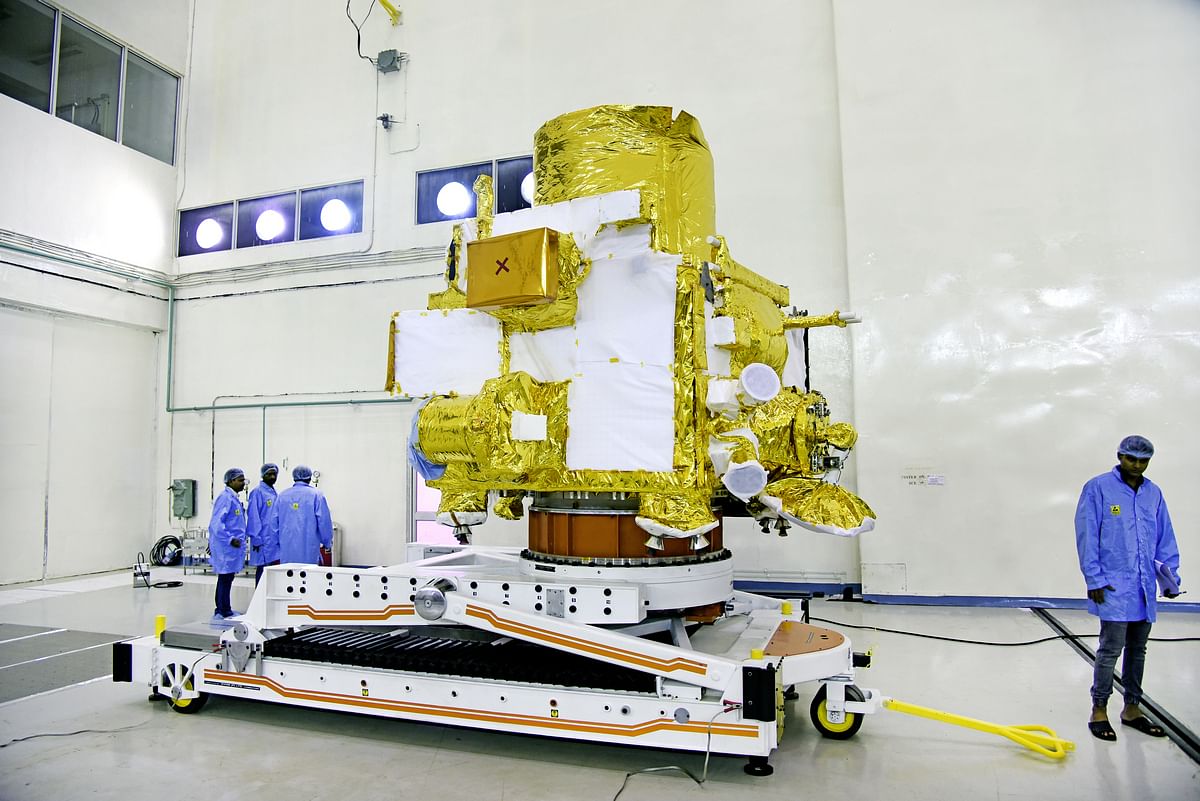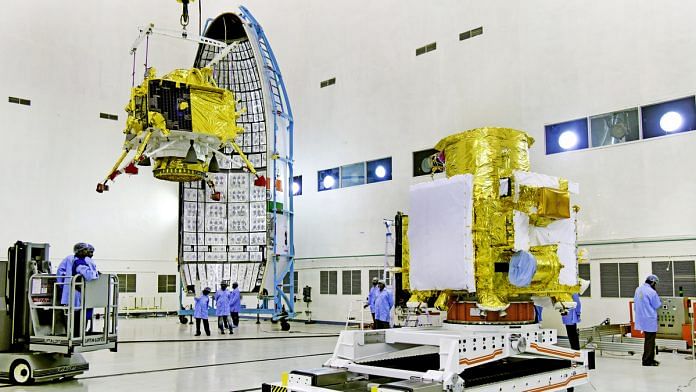New Delhi: The Indian Space Research Organisation (ISRO) has released the first images of the lander, rover and orbiter of Chandrayaan 2, India’s second mission to the Moon that is set to be launched next week.
The images on the ISRO’s website show the three important components of the mission in the process of integration at the Satish Dhawan Space Centre in Sriharikota, Andhra Pradesh. They also show the components — the Vikram Lander, the Pragyan Rover and the Chandrayaan 2 Orbiter wrapped in golden foil, which is meant to protect the equipment from harsh solar radiations on the Moon’s surface.
The Chandrayaan 2 mission will explore the South Pole of the Moon for the first time. It will be ISRO’s “most complex mission” so far, the space agency’s chairman K. Sivan had earlier said.
The launch will be attempted on 15 July from the spaceport at Sriharikota.

It will be the first time that Indian space enthusiasts will be able to view the launch of a major space programme live from the newly built Launch Viewing Gallery, a stadium with a seating capacity of 5,000 inaugurated in March this year.
The gallery provides a clear view of the space agency’s two launch pads, according to an ISRO statement. Online registrations for attending the event were closed within a day.

Also read: As the race for Moon heats up, Chandrayaan-2 could give ISRO an edge, and spoils
ISRO all set for launch
The space agency appears all set for the launch.
The Geosynchronous Satellite Launch Vehicle-MkIII (GSLV Mk-III) — India’s biggest indigenous rocket — on which the mission will be launched has been moved to the launch pad.
The spacecraft is powered and health check in progress, the space agency said in an update.
The orbiter, lander and rover have eight, four and two payloads, respectively. These payloads are expected to analyse the water on the lunar surface, monitor lunar quakes, dig and study minerals and more.
The Vikram Lander is expected to touch down on the lunar surface between 6 September and 7 September. On the day of landing, the lander will separate from the orbiter and then perform a series of manoeuvres to place itself near the South Pole of the Moon.
The rover will then roll out and carry out experiments on the Lunar surface for a period 14 Earth days, after which it is expected to stop working due to intense solar radiations. The Chandrayaan 2 Orbiter, on the other hand, will continue its mission for a year.
Also read: Why Chandrayaan-2 is ISRO’s ‘most complex mission’ so far






